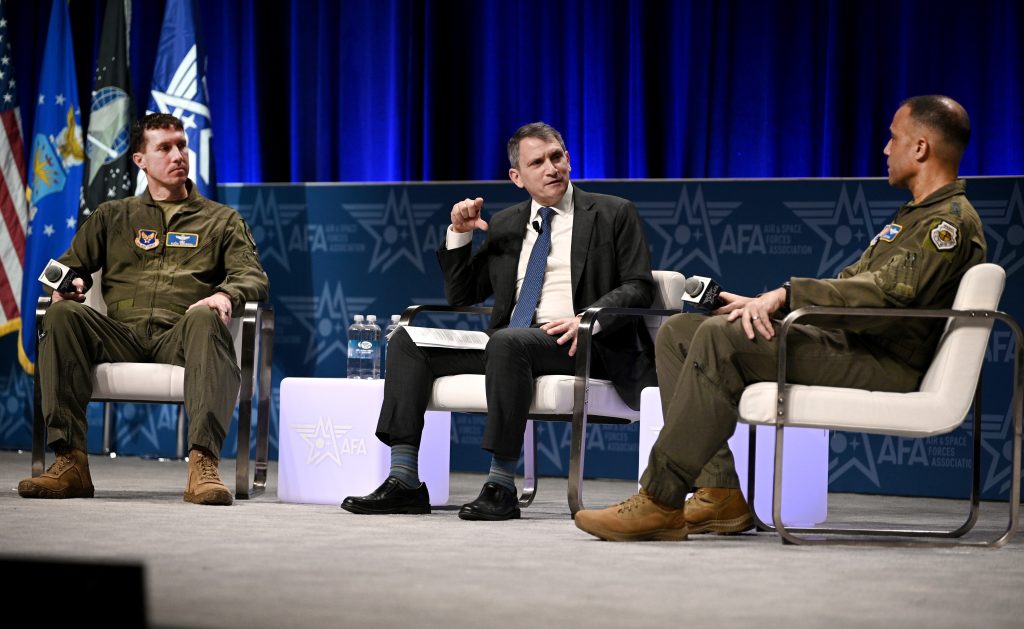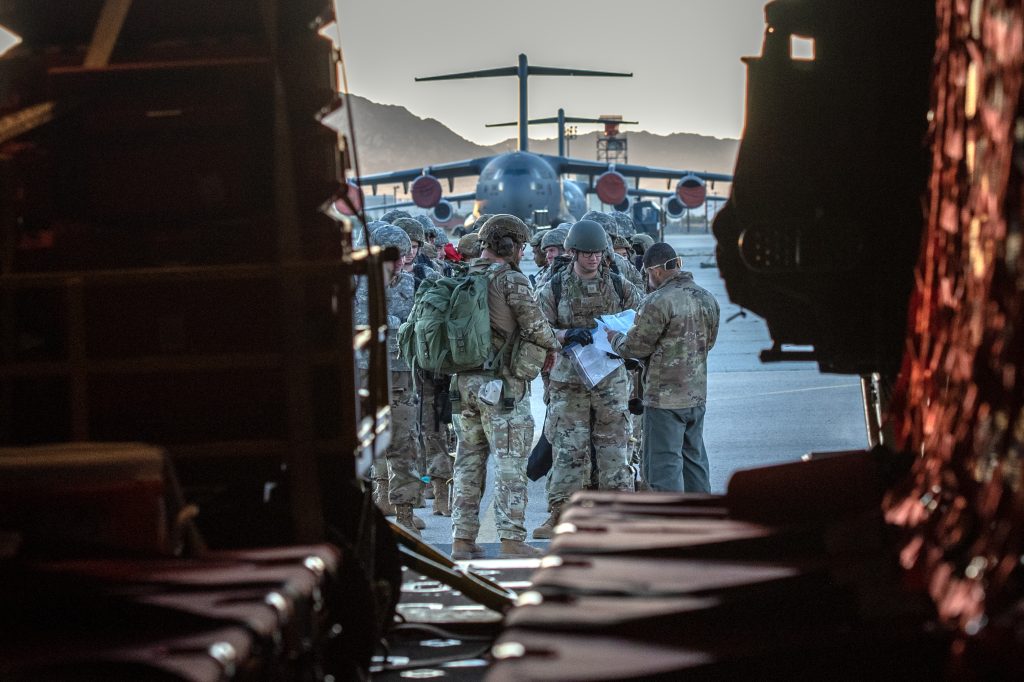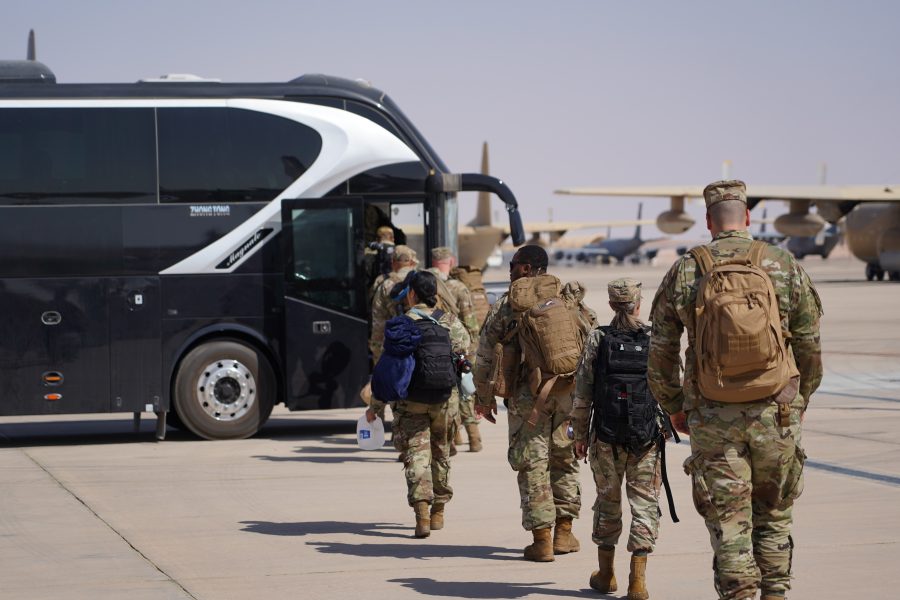AURORA, Colo.—When three Air Task Force elements begin taking shape this summer, they will be laying the groundwork for the new Combat Wings now seen as the Air Force’s deployable “units of action” for future operations—a multi-year process to realign the way the service presents forces to the Department of Defense’s 11 combatant commands.
The aim is to create predictable workup schedules and unit cohesion for Airmen while enhancing the service’s ability to define risk and resourcing requirements to the Joint Staff and Secretary of Defense.
The three Air Task Forces forming this summer are the first of at least six planned task forces that will form, go through workups together, and eventually deploy as units in fiscal 2026. Each task force will consist of a Command Element and staff, an Expeditionary Air Base Squadron for base operating support, a Mission Generation Force Element to project air power, and a Mission Sustainment Team to enable remote operations under the Agile Combat Employment concept of operations.
“The Air Task Forces that we put together really spoke to an evolution of rotational forces,” deputy chief of staff for operations Lt. Gen. Adrian Spain said at the AFA Warfare Symposium Feb. 14. “But it is also applicable to standing forces and theater forces. Combat Air Wings speak to the remainder of the force. … What we’re trying to do is build warfighting effectiveness over time with coherent teams.”
Like the ATFs, the Combat Wings will be led by a command element with an air staff to execute command and control; a mission element, such as a fighter, bomber, or airlift squadron, for example; and a combat service support element to run the air base and air field and care for the needs of wing personnel.
Brig. Gen. David Epperson, director of current operations at Headquarters U.S. Air Force, said the task force command elements will stand up this summer, while sustaining elements will come together in teams of 100-150 personnel at two to three base locations. These will come together for exercises and when it’s time to deploy. That way, when the task forces deploy as a unit, personnel will already have experience working together during the work-up phase.
In the longer term, combat wings will come in three variants:
- Deployable Combat Wings (DCW): Complete units that can deploy together, with their own native command-and-control, mission, and support elements. Citing the 366th Fighter Wing at Mountain Home Air Force Base, Idaho, as one potential example, Spain said such units must be able “pick up and go in their entirety as a unit of action” and would be resourced to do so, leaving behind only those capabilities necessary to maintain the base in their absence.
- In-Place Combat Wings (ICW): Complete units with command, mission, and support elements that fight from home station, such as the 341st Missile Wing at Malmstrom Air Force Base, Mont. Missileers fight from their home station and while some elements of a wing might deploy elsewhere, the unit must be able to conduct its mission activities around the clock, regardless.
- Combat-Generation Wings (CGW): The third wing element are units that provide force elements to others, whether those elements entail command and control; mission elements, such as fighter, mobility, or intelligence, surveillance, and reconnaissance squadrons; or service support elements that could be “bolted on” to a deployable combat wing. “A combat-generation wing is a little different,” Spain said. “You have elements that would deploy, but the whole wing isn’t going to deploy and it won’t be resourced to do that.”

Building to the New Model
All this will take time to build. The expeditionary air base now in CENTCOM and the new Air Task Forces are just the beginning.
“This is a kind of spiral development,” Epperson said.
The first phase began in October, when the Air Force deployed its first Expeditionary Air Base (EAB) team to the Middle East—the first deployment rotation under the new Air Force Force Generation model, known as AFFORGEN. That unit arrived in the region about a week after Iran-backed Hamas militants attacked Israel on Oct. 7, setting off an Israeli invasion of Gaza. That air base element, drawn largely from the South Carolina Air National Guard, included a core nucleus that trained together beforehand, plus additional personnel that joined in theater.
“They were able to operate at the speed of trust from the second they got on the ground,” Epperson said. “And that’s really what we’re trying to do with Air Task Forces.”
ATFs will go a step further, with teams of 100-250 Airmen coming together during the “prepare” phase of the AFFORGEN cycle, a full year before they’re available to deploy. “They will train together at that unit,” Epperson said. “They’ll develop those Mission Ready Airmen skills, they’ll learn the different tasks that their entire team is working on. And they will be—instead of functionally aligned—they’ll start to become mission-aligned and mission-focused.”

Deployable Combat Wings
The goal for Deployable Combat Wings is to take that Air Task Force concept one step further. DCWs will position the entire deployable team in a single location; living, working, and training together throughout the AFFORGEN cycle. “So they know how to work together, the command and control [element] knows and understands all the elements, and they really can hit the ground running” when they land in theater, whether that’s in the Indo-Pacific, Europe, Africa, or the Middle East, Epperson said.
DCWs will hone their skills, including developing those needed for agile combat employment. “The intent is to fully resource that deployable combat wing to enable all of its warfighting missions and functions and responsibilities, to include agile combat employment,” Spain said.
“It’s designed to fit into any C2 structure and fall in on the prevailing command and control apparatus of the combatant commander, and … it has the elements required to both take orders and to give orders and operate off of mission command and commander’s intent if disconnected.”
Finding Gaps, Defining Risk
By design, each DCW and ICW must be sufficiently manned to deploy without leaving a dysfunctional base in its wake that can’t maintain security or keep up facilities needed by those left behind. Each operational wing will be evaluated and identified as one of the three types, with manning requirements adjusted to support those requirements.
Epperson said this will take time. “We’ll try to do things as efficiently as we can, but realize that it’s not going to be perfect from from the get go,” he said. “It’s going to take some evolution as we move through this process to make sure we know where all the right resources are, and how much they need.”
Spain said that process will expose areas in need of growth and potentially areas that could be overmanned. A generation ago, wings were constructed to be able to pick up and go fight; over the past 30 years or so, however, wing and base operations were consolidated for efficiency, which was considered prudent given global threats. Now, as the Air Force re-postures and re-optimizes for great power competition with China, Chief of Staff Gen. David Allvin says a different kind of structure is necessary.
“We need to ensure that our combat wings are coherent units of action that have everything they need to be able to execute their wartime tasks,” Allvin said.
At the same time, Air Force fighters, bombers, C4ISR, mobility, and cyber forces have been in continuous high demand. And while crowd-sourcing to fulfill that demand has worked, it’s left the Air Force unable to explain to the Joint Force how fulfilling demand today could impact readiness tomorrow. Unlike the Army’s Brigade Combat Teams, the Navy’s Carrier Strike Groups, and the Marine Corps’ Marine Expeditionary Units, the Air Force hasn’t been able to define operational units of action in such a way as to explain that deploying this unit now will make it impossible to deploy some other unit later.
“We can articulate it more effectively and advocate for a particular method or means” to answer a requirement with this structure, Spain said, and to lay out how that could impact the ability for a given unit to be able to deploy for some other contingency in the future.
But explaining risk and resourcing more effectively are ancillary benefits, not the primary focus of the changing deployment model.
“This is about warfighting effectiveness,” Spain said. “The next fight is not going to be the same fight as the one that we’ve executed for the past 30 years.”
